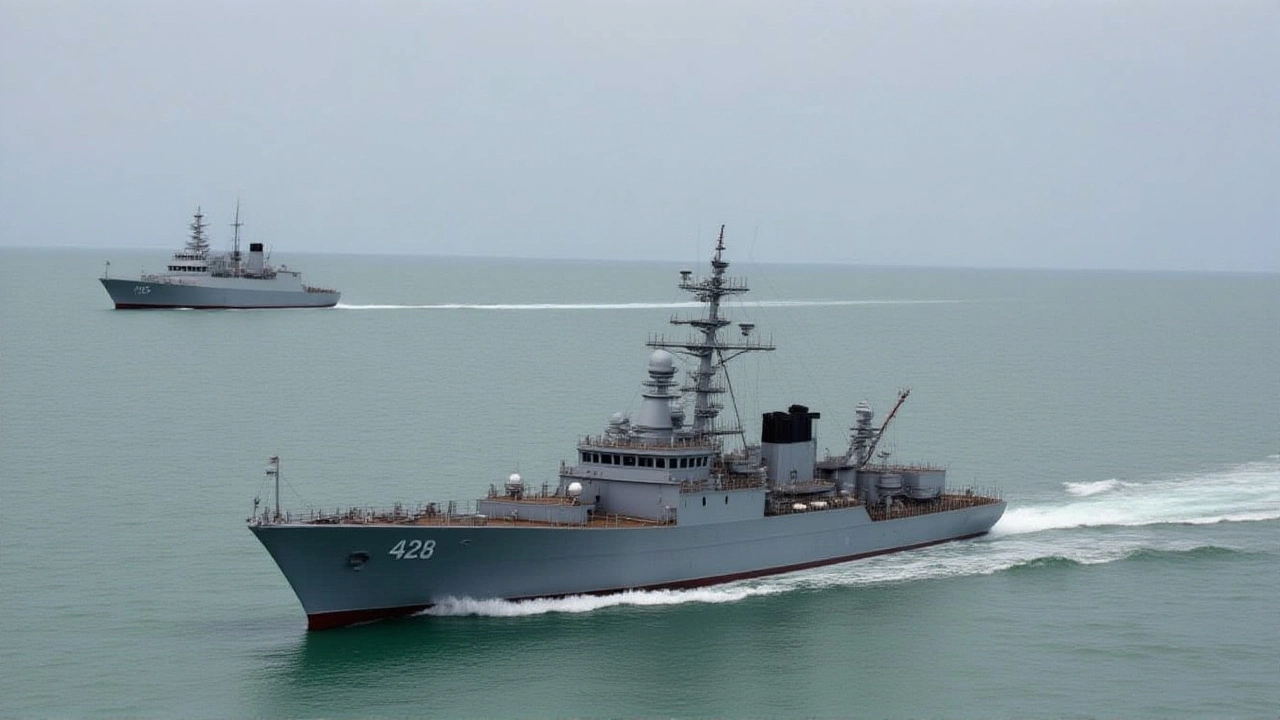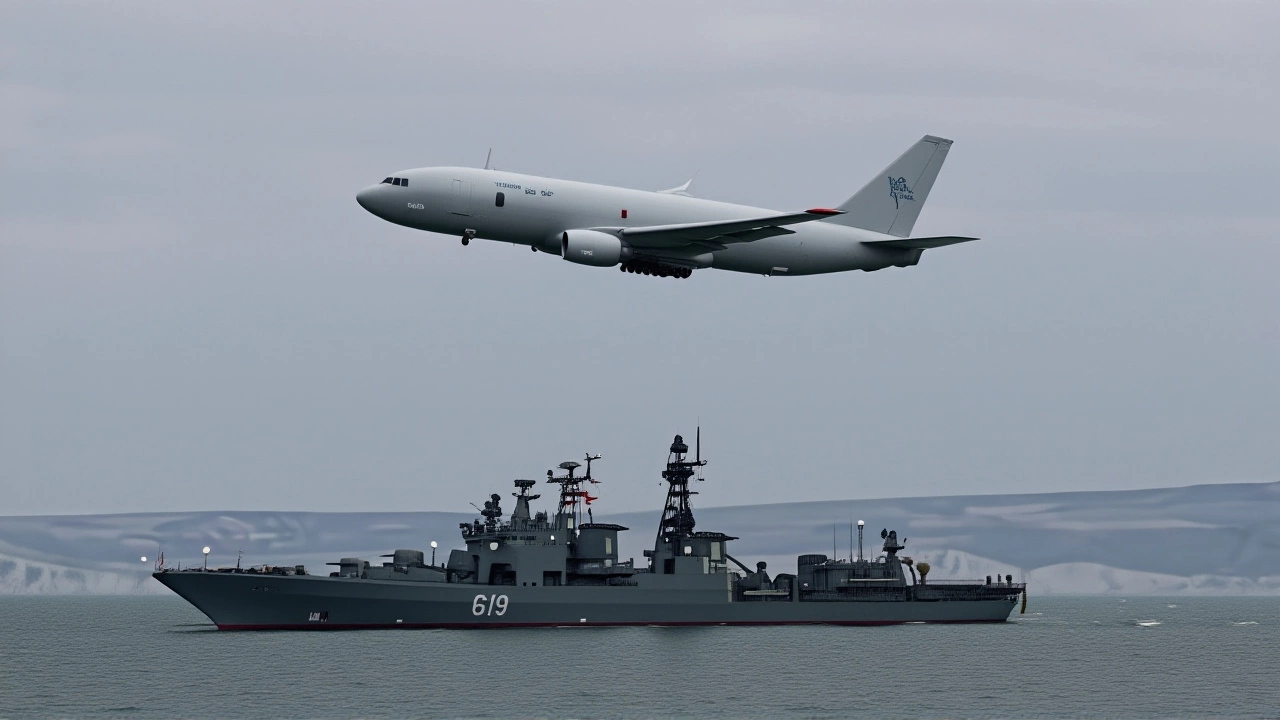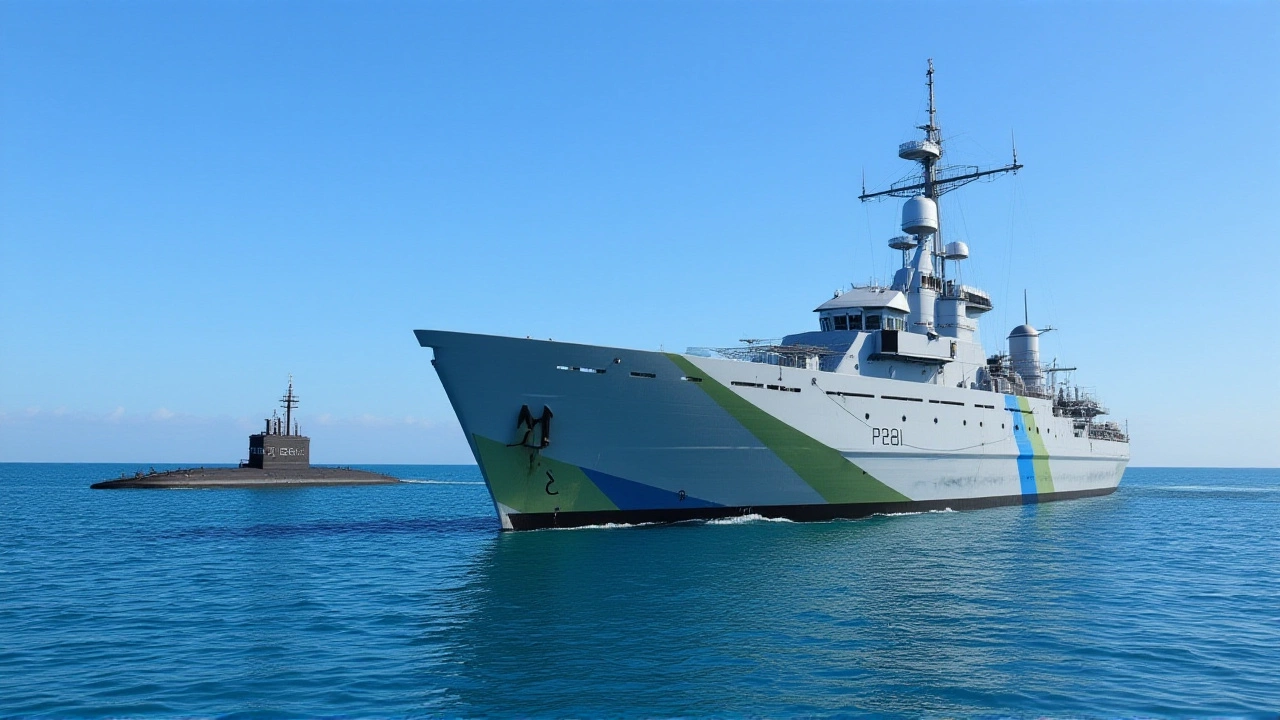On May 9, 2025, the HMS Tyne, a Royal Navy River-class offshore patrol vessel, tracked the Russian Navy’s Krasnodar (B-265)—an Improved Kilo-class submarine—as it surfaced and transited the English Channel. The operation, conducted under international maritime law, was no routine patrol. It was a deliberate, coordinated display of deterrence, occurring just two weeks after similar surveillance of Russian ships in the same waters. And it wasn’t over by sundown. By evening, HMS Tyne had already shifted focus to shadowing the Steregushchiy-class corvette Boikiy and three Russian merchant vessels through the Dover Strait.
Why the English Channel? It’s Not Just Water
The English Channel isn’t some quiet backwater. It’s the world’s busiest shipping lane, with over 500 vessels passing through daily. Beneath its surface lies critical infrastructure: undersea cables carrying 95% of transatlantic data, gas pipelines feeding the UK’s energy grid, and offshore wind farms powering millions of homes. A Russian submarine surfacing here isn’t a coincidence—it’s a signal. And this one, the Krasnodar, had just returned from a months-long deployment in the eastern Mediterranean, following its transit through the Strait of Gibraltar between February 15 and March 31, 2025, confirmed by the Spanish Navy.The timing isn’t lost on analysts. The Krasnodar’s movement coincides with the geopolitical vacuum left after the fall of Bashar al-Assad’s government in Syria on December 8, 2024. Russia’s naval presence in the Mediterranean has been recalibrating ever since—now, it’s testing how far it can push in Europe’s backyard.
The Shadow Game: How the Royal Navy Tracks Submarines
You don’t just ‘spot’ a submarine in the Channel. You hunt it—with patience, tech, and teamwork. HMS Tyne, armed with little more than a 20mm cannon and machine guns, isn’t built to fight. But it’s built to watch. Its Kelvin Hughes SharpEye radar picks up the smallest surface disturbances. Meanwhile, a Wildcat helicopter from 815 Naval Air Squadron circled overhead, using dipping sonar to listen for underwater signatures. Behind them, the RFA Tideforce, a fleet tanker, kept the patrol going—refueling, resupplying, extending the mission’s reach without a single port call."Activations like the one we've seen on this patrol to track Krasnodar are our bread and butter," said Lieutenant Bailey Denyer, Operations Officer aboard HMS Tyne. "Defending UK sovereignty and that of our NATO allies is at the very heart of what the Royal Navy does."
That quote isn’t just PR. It’s doctrine. This was the third such operation in under a month. Just two weeks prior, HMS St Albans and HMS Mersey had done the same to Russian vessels. Now, HMS Tyne—fresh off a maintenance stint at Portsmouth Naval Base—was back in the game, working alongside its sister ships HMS Mersey and HMS Severn as part of the UK’s Fishery Protection Squadron.

A Broader NATO Picture
This wasn’t a UK-only show. It was part of NATO’s broader maritime posture, quietly ramped up since 2022. Russian submarines have been more active in European waters than at any time since the Cold War. In 2024 alone, NATO recorded 47 separate instances of Russian naval vessels entering the North Atlantic and Channel zones—nearly double the 2020 figure.On the very day HMS Tyne tracked the Krasnodar, UK Prime Minister Keir Starmer was in Oslo, Norway, chairing a meeting of the Joint Expeditionary Force (JEF). The agenda? Russia’s maritime threats and the protection of undersea infrastructure. HMS St Albans was present in Oslo—not as a guest, but as a symbol. The UK isn’t just watching. It’s coordinating.
What Happens Next?
The Krasnodar exited UK waters near the Dover Strait on May 9, 2025, and responsibility passed to NATO allies. But the mission didn’t end. HMS Tyne immediately pivoted to monitor the Boikiy and its three merchant escorts—Baltic Leader, Patria, and Cebepa. Why? Because merchant ships often carry sensors or surveillance equipment. They’re the eyes and ears of a naval force.There’s no indication the Krasnodar acted aggressively. It surfaced, as required by UNCLOS, and kept to its course. But that’s the point. Russia doesn’t need to provoke. Just showing up—repeatedly, predictably, in places where it’s not wanted—is enough to unsettle. To test resolve. To remind the West that it can be anywhere, anytime.

Behind the Scenes: The Ships and the System
HMS Tyne is one of nine River-class vessels—slow, lightly armed, but endurance monsters. With a range of 5,500 nautical miles and a top speed of 20.5 knots, they’re the perfect eyes on the water. They don’t sink ships. They track them. And in an era where stealth matters more than firepower, that’s worth more than a missile battery.The RFA Tideforce is the unsung hero. Without it, patrols like this would end after a week. With it, the Royal Navy can stay on station for months. That’s strategic patience—and it’s working.
Frequently Asked Questions
Why did the Russian submarine surface in the English Channel?
Under the United Nations Convention on the Law of the Sea (UNCLOS), submarines must surface and fly their flag during "innocent passage" through territorial waters. The Krasnodar did this to remain legally compliant while transiting the Channel. But its presence—especially after a Mediterranean deployment—was clearly a strategic signal, not just a transit.
How often does the Royal Navy track Russian vessels?
Since early 2024, the Royal Navy has conducted at least 12 formal surveillance missions against Russian naval units in UK waters and the Channel. In 2025 alone, there were three such operations in May, including the tracking of the Krasnodar and Boikiy. These are not random—they’re scheduled, coordinated, and part of a broader NATO monitoring framework.
What’s the significance of the RFA Tideforce in these operations?
The RFA Tideforce enables extended patrols without returning to port. It provides fuel, food, and spare parts at sea—critical for maintaining continuous surveillance. Without it, vessels like HMS Tyne would need to break off after 7–10 days. With it, they can stay on station for over a month, making deterrence persistent, not periodic.
Is this a sign of escalating tensions with Russia?
Not necessarily escalation—but sustained pressure. Russia isn’t attacking. It’s probing. And the UK’s response isn’t reactive; it’s institutionalized. The fact that HMS Tyne was redeployed within hours to track another Russian vessel shows this is now standard procedure. It’s the new normal in European waters.
How does this relate to the situation in Syria?
The Krasnodar’s transit through the Mediterranean followed Russia’s strategic pivot after the fall of Assad in December 2024. With its influence in Syria weakening, Russia is reinforcing its naval presence elsewhere—particularly near NATO’s maritime chokepoints. The Channel isn’t random. It’s a message: Russia still has reach, and it’s willing to project it.
What’s next for the Royal Navy’s patrol operations?
The Royal Navy plans to increase the frequency of River-class patrols in the Channel and North Sea through 2025, with all nine vessels now fully operational. A new joint surveillance task force, including Dutch and Norwegian vessels, is being formed under NATO’s Maritime Command. The goal: turn reactive tracking into predictive deterrence—staying ahead of Russian movements before they even enter UK waters.
